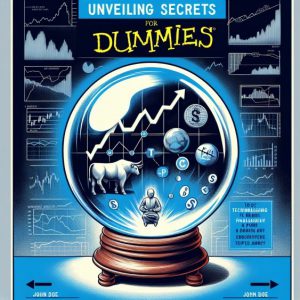
Feb 13, 2024
The Power Play: Interest Rates and Gold
Introduction: The Rhythm of the Market
Every economic symphony is composed of several instruments. In this vast orchestra, two key elements frequently perform a symbiotic dance – interest rates and gold. But how are these two seemingly disparate entities so intricately linked? The answer lies in understanding the underlying beat that connects them – the psychology of the market.
The relationship between interest rates and gold is not random. It’s a well-choreographed ballet guided by economic indicators, market sentiment, and mass psychology. Leading experts in these fields, such as Robert Shiller, the Nobel laureate in behavioural economics, have highlighted the importance of understanding these psychological undercurrents in predicting market movements.
The Golden Thread
Gold, throughout history, has been the beacon of safety in the tumultuous seas of economic uncertainty. Unlike paper currency, its value doesn’t flutter with the whims of political instability or economic downturns. Instead, it stands tall and shines, offering a firm handhold for investors when interest rates start their descent.
The cost of holding gold, which directly correlates with interest rates, becomes significantly more feasible when the latter falls. This inherent inverse relationship between interest rates and gold forms the bedrock of many investment strategies and financial decisions in markets worldwide. But it’s not just a game of numbers. It’s a tapestry woven with threads of sentiment and psychology.
Lower interest rates often serve as a forewarning of economic instability or sluggish growth. They echo in the vast halls of the financial markets, instilling a sense of unease. Investors, in response, start seeking refuge. They look towards something that can weather the storm, something unyielding and steadfast. And that’s where gold comes into play.
In these scenarios, gold isn’t merely an investment or a transaction. It transforms into a symbolic lifeboat, a safety beacon amidst financial chaos. This shift towards gold is not purely driven by economic logic; it’s a psychological pivot sparked by fear, uncertainty, and the primal human instinct for security.
Investors flock towards gold, not just because the numbers make sense but due to an ingrained belief in its stability. It’s a golden thread that connects the dots between falling interest rates and rising gold prices. This thread, often invisible to the naked eye, is a critical element in understanding the intricate dance of financial markets. It’s the golden thread that weaves together the tapestry of investment strategies, providing a safety net in times of economic uncertainty.
The Interest Rates Waltz
In the grand ballroom of financial markets, interest rates and gold perform an intricate waltz, each step echoing the other’s movement. The rise in interest rates often shifts the spotlight from the golden allure to the promising rhythm of bonds and other interest-bearing assets. But what if the orchestra changes its tune? What if the interest rates ascend while the bond market descends into the chasm of the extremely oversold zone?
Here enters the fascinating world of behavioural economics, where psychology and finance intertwine. It suggests that such a scenario resembles a crescendo in a symphony, indicating a peak. Under such circumstances, interest rates will likely top out and recede. This is the cue for gold to step into the limelight, making it a suitable time for investors to consider this precious metal.
A historical echo of this dance was seen in the closing months of 2018. The Federal Reserve, playing the conductor, raised the baton of interest rates. Consequently, the bond market, unable to keep up with the tempo, slipped into an oversold territory. This was the market’s signalling that the high pitch of rates was unsustainable; the crescendo had been reached.
Following this economic symphony, interest rates took a bow and began their descent. Simultaneously, gold, waiting patiently in the wings, began its ascent. The prices of this precious metal embarked on an upward trajectory, a golden curve in the graph of the financial markets. As the orchestra of the economy played out this complex waltz, investors who understood the rhythm reaped the benefits.
This intricate waltz between interest rates and gold exemplifies financial markets’ dynamic, ever-evolving nature. It’s a dance of variables, a testament to the invisible threads that bind different economic elements together. In this waltz, understanding the steps could lead to a successful investment strategy.
The Power Play
To successfully navigate the dance floor of financial markets, one must appreciate the complex symbiosis between interest rates and gold. This relationship is not a mere tug-of-war between two economic variables. Instead, it’s a power play that unfolds in the grand arena of finance, choreographed by both tangible economic indicators and the less tangible realm of mass psychology.
In this power play, interest rates and gold are like two sides of a coin, each reflecting the other’s influence. As interest rates rise, the sparkle of gold may seem to diminish momentarily but only shine brighter when the rates begin to fall. It’s a rhythmic pattern, a predictable oscillation that savvy investors can leverage.
However, understanding this relationship is not just about tracking numbers or analyzing charts. It’s about perceiving the subtle shifts in investor sentiment and gauging the undercurrents of fear or confidence that ripple through the market. It’s about recognizing that raw data don’t solely drive the economic world. It’s also swayed by the market participants’ collective psychology, perceptions, and responses to changing economic conditions.
One can anticipate market movements by keeping a keen eye on these patterns and trends. For instance, when interest rates rise and the bond market enters the oversold territory, it’s usually a precursor to a rate pullback. Consequently, it signals that it might be an opportune time to turn towards gold. Understanding this power play allows investors to make informed decisions, capitalizing on the shifts in the market dynamics.
This power play between interest rates and gold is a testament to the intricate interplay of numbers, sentiments, and market psychology. It’s a dance of dynamics, a chess game of economics, where understanding the symbiosis between the pieces can give one the upper hand. It’s the power play that, when mastered, can unlock the potential for intelligent, strategic investments.
Timing the Swing
The intricate dance between interest rates and gold is not just about knowing the steps; it’s about precisely timing the swing. The rhythm of this financial waltz can be complex, but understanding when to make the right move can make all the difference.
When interest rates fall and gold trades in the overbought range, it’s like a dance reaching its peak spin. Holding the investment moves and waiting for a pullback before joining the dance might be prudent. A rush in such a scenario could lead to missteps, while patience can offer a better rhythm to invest.
Conversely, if gold is oversold during a rise in interest rates, it’s like a dance rhythm slowing down, signalling a moment to step in. This could be an opportune moment to buy, as the dance of dynamics might soon swing in favour of gold.
A striking illustration of this timing in action can be seen from 2001 to 2006. The Federal Reserve, like a strict dance conductor, steadily increased the tempo of interest rates. Despite this, the dance of gold didn’t falter; instead, it continued to rise. The reason behind this counterintuitive move was that gold was oversold at the start of this period, making it a perfect entry point for investors.
Those who understood this dynamic and timed their moves precisely could ride the wave of increasing gold prices, even amidst the rising interest rates. They didn’t just understand the steps of the dance; they mastered the rhythm, timing their moves to the beat of the financial market.
Timing the swing in this intricate dance between interest rates and gold requires a keen understanding of market dynamics and an eye for detail. It’s about knowing when to step in and when to wait, ensuring that each move aligns perfectly with the rhythm of the financial markets. This precision separates a novice from a seasoned dancer on the grand stage of investment.
Conclusion
“Interest Rates and Gold” continue their dance, with each movement influencing the other. This power play’s impact is felt in the financial markets and the broader economy. As we stride into the future, this symbiotic dance will continue to evolve, reflecting the changing rhythms of the global economy.
Understanding this dance is not just about following the steps; it’s about feeling the rhythm, understanding the emotion, and anticipating the next move. It’s about recognizing that the dance between “Interest Rates and Gold” is more than just an economic phenomenon; it reflects our collective psyche.
We can understand this dance better by integrating the profound insights of the world’s leading mass psychology and behavioural economics experts. This will enhance our financial acumen and provide a deeper understanding of the daily intricate ballet that unfolds in the financial markets.
In conclusion, the dance between “Interest Rates and Gold” is a complex, fascinating spectacle. It’s a dance that requires skill, understanding, and a keen sense of timing to navigate successfully. But for those who can master it, the rewards can be golden.
Bridging Science and Society: Cross-Disciplinary Reads

Investing allows you to beat inflation and maintain the purchasing power of your money over time

Mass Psychology of Fascism: Unmasking Bombastic News

OVV Stock Forecast: Buy, Hold, or Sell?

What Does a Death Cross Mean in the Stock Market? Exploring Its Significance

Financial Freedom Book: A Pinch of Salt, a Splash of Whiskey

Unveiling Secrets: Technical Analysis for Dummies

The Primary Purpose of Portfolio Diversification is to Finesse Your Investments for Optimal Returns

The Enduring Reign: Why is the US Dollar the World’s Most Pre-eminent Currency?

Fiat Money Example: The Dollar Shines as a Prime Illustration

Dogs of the Dow ETF: BiggerBite, Less Work

How Do You Win the Stock Market Game? Effective Strategies

Black Monday 1987: Turning Crashes into Opportunities

Technical Analysis of Trends: Cracking the code

A Sophisticated Approach: Do Bonds Increase Returns When the Stock Market Crashes?



